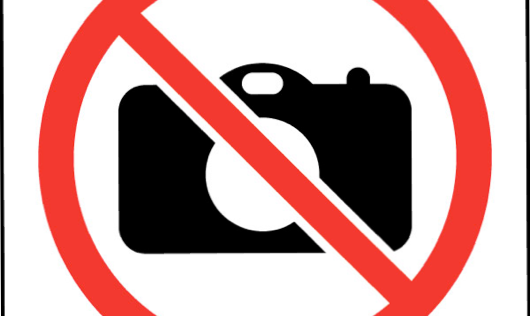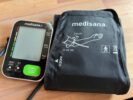The Blog Subscribe
The Law Relating to YOUR Photos

 There have been numerous incident reported in the recent weeks of photographers who have fallen foul of the police by doing nothing more than taking pictures in a public place. You have to understand that there is no expectation of privacy in a public place. Naomi Campbell had no such right as she emerged from drug rehab clinic some years ago, but Callum Best did when although in a nightclub was in a restricted private area when he was caught on video.
There have been numerous incident reported in the recent weeks of photographers who have fallen foul of the police by doing nothing more than taking pictures in a public place. You have to understand that there is no expectation of privacy in a public place. Naomi Campbell had no such right as she emerged from drug rehab clinic some years ago, but Callum Best did when although in a nightclub was in a restricted private area when he was caught on video.
I have published this piece before, but given the recent press stories, the contents have never been more valid. Pass it on freely to anyone who you think would benefit from. By the way, it also works just as well for painters who have captured events in public (I had a friend who painted a boat with its name and wondered if he could sell it)
Enjoy
The law relating to when and where you can and cannot take pictures and what you can or cannot do with them is fairly simple and often misunderstood and yes as with all draconian powers, the police misinterpret them as often as we would and obviously I can’t answer for them, but in simple terms, here’s the law in the UK on photography and the license you have to use the images.
1. Taking Pictures of People in a public place
Generally speaking, if you’re in a public place, your fair game to anyone with a camera, the reason is that that the area is public and anyone who chooses to stand where the photographer stands would be able to see you, therefore how can you expect privacy. The use of such images for reportage in newspapers would be perfectly acceptable and not constitute a breach, hence why celebrities out shopping with their families are often in the papers and can do nothing about it. Children are often blurred out in these images at the judgement of the publishers but strictly speaking don’t need to be (although I agree with the practice). Selling any one of these images to advertise a product and you have a very different problem. Going back to the boat painting, the boat was in a race attended by many people and watched on Euro Sport by several millions across Europe so the rules above would apply, the painting can be sold.
1. Taking Pictures of People in an invited gathering
Slightly different, each of the people has consented to each of the others viewing them at the event (that is implied by attendance) and then the taking of pictures for memories is also implied, but the taking of pictures for reportage is more blurred but more likely to land you in hot water. Theatrical performances are copyrighted and as such taking them would be a wrong, but the possession of a camera in a theatre that has been used to take pictures of the attendees and not the performance is not a problem. The warning in the movie theaters that mere possession of a camera is an offence is more ‘saber rattling’ than anything else. Children’s plays at school are a matter for control by the school administration but legally speaking if you take pictures of the play to keep and cherish there is not a legal imperative that stops you (generally)
1. Selling Images of People for Production and Sale
This is very different again. If you took a picture of a person and then sold it to an Advertising Agency for use in a piece of commercial literature without the express consent of the person, then they would have rights to monies generated from its use. If however, they are posing for the image in a commercial like environment (Studio, commerce setting) then it is implied that they are consenting to such use and if you can show that you paid them for this then, there wouldn’t be a problem. Model Releases are a ‘belt on the braces’ document but worth having to just clear up any nonsense but speaking as someone who regularly books models, don’t be conned by those that only offer to sign a release in return for extra money, if they want this, find someone else (and you will). Even with a generally worded release that the person consents to commercial use then you should be fine it’s more of a receipt than anything else
1. Intruding on a Persons right to privacy
This is a HUGE debate and is very contextual. When is someone expecting privacy? Shooting a picture over a garden wall whilst someone is sunbathing is most certainly a breach, shooting into a hotel room from outside is again unequivocal. Shooting someone leaving a drug rehabilitation centre whilst recovering from addiction is a famous case here in the UK. Model Naomi Campbell sued the Mirror Group News for a breach of privacy in such a situation when the paper published the pictures in one of its newspapers. Surprisingly she lost the case at the House of Lords as the Law Lords did not want to create a ‘Privacy Tort” (a general rule of thumb for future cases). So be careful on how you take your pictures in such circumstances, but, you’ll note that the photographer was not the one she went for!
1. Pictures of Public Buildings
Rule 1 Applies in almost all circumstances up to reportage images only
1. Sensitive Government Buildings and Terrorist Targets
A lot more likely to get you into trouble with your Police Force, be careful how ‘intrusive you get’. Houses of Parliament, Thames House (MI6) and GCHQ at a distance will be perfect fine as long as you are stood on public ground, but get too close or start to try for that ‘elusive’ shot and...?
The Summary.
In each of the scenarios above (except 6) the legal remedy for breaches would be a Civil Action where the wronged party is looking to recover damages from you, more often that not, the Police have no interest.
Finally, when in public you’re fine for personal use and also at gatherings, your problems only start to mount when you want to sell your images, but with a little planning and consideration of the thoughts and feelings of the people whom you are photographing, then you shouldn’t have a problem.
Most of all, enjoy your photography.
Ewen
Author

Ewen Rankin
 BTN Rebrands as The American Tech Network
BTN Rebrands as The American Tech Network Patrice’s Holiday Gift Guide: Books
Patrice’s Holiday Gift Guide: Books Patrice’s Holiday Gift Guide: Health
Patrice’s Holiday Gift Guide: Health tsoHost saved my bacon
tsoHost saved my bacon My first Raspberry Pi adventure
My first Raspberry Pi adventure